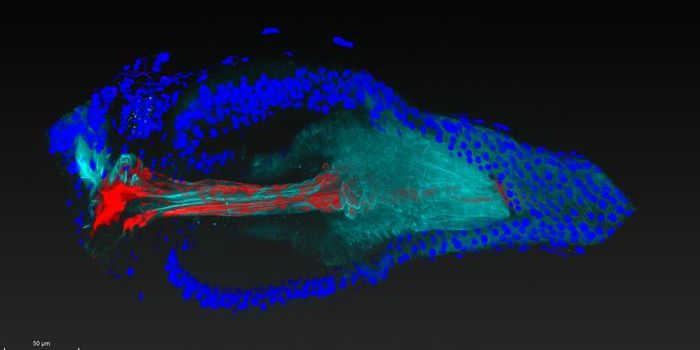Rapid Genetic Mutation in a Relative of a Crop-Killing Bacterium
Citrus greening, known by several other names including yellow dragon disease, Huanglongbing, or Candidatus Liberibacter asiaticus, is a serious citrus plant disease that is the number one killer of citrus trees worldwide. It is spread by an insect called the Asian citrus psyllid, which carries the bacterium that causes the disease. Though the insect does little direct damage to citrus, the Candidatus Liberibacter asiaticus (CLas) bacterium it contaminates trees with leads to citrus greening.
Right now, there is no effective way to prevent or cure the disease. One major challenge is that the pathogenic CLas affect phloem cells in citrus trees. The phloem cell make up under one percent of all cells in the plant, they are buried deep inside tissues, where they are interspersed with other types of cells.
Researchers have now identified a rapidly mutating bacterium that is a close relative of CLas. This new bacterium, called L. capsica, is also part of the Liberibacter family. There are nine members of Liberibacter that we now know of, and three of them are linked to citrus greening while one infects potatoes.
There is concern that this newly identified microbe will also become pathogenic. “As with new strains of COVID-19, bacteria become variants of concern if their mutations can impact pathogenic or transmissible properties,” explained study leader Allison Hansen, an entomologist at the University of California Riverside.
Liberibacters can acquire DNA from the host cells they infect, and without a host, they cannot survive, noted Hansen.
In this study, which was reported in Microbiology Spectrum, the investigators found 21 gens in the L. capsica genome that are quickly evolving. The mutations they are acquiring are associated with infection as well, suggested the researchers. One gene that has been repeatedly changing has an influence on a strcuture in bacteria called the pilus, which help bacteria move into host cells in insects and take up DNA. After the insect moves to a plant, the bacterium can move into the plant tissue.
While we still don't know if L. capsica infects plants or crops, it was discovered in insects called psyllids, which are Brazilian pepper plant pest. Researchers are also not yet able to grow L. capsica in a laboratory, making it very challenging to study. This research relied on a single sample, and more work will be needed to learn more about this microbe.
“We’re informing scientists in Brazil and other places to screen plants for it,” Hansen said. “It should be on everyone’s radar for outbreak potential given the propensity of Liberibacter for being serious plant pathogens on domesticated crops.”
Sources: University of California - Riverside, Microbiology Spectrum









